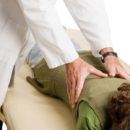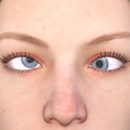Tinnitus

Tinnitus is a sensation of noise in the ears or head when no such external physical noise is present. It may be a buzzing, ringing, roaring, whistling or hissing sound. The noises vary in volume, pitch and frequency (continuous or intermittent) as well as their localization, and can occur on one or both sides. It can happen suddenly for no apparent reason and cause great distress to the sufferer, or sneak up gradually over years.
The cause of tinnitus can be hard to determine. Numerous factors increase risk, including loud noise exposure, infections in the ear or sinuses, hearing loss, Meniere’s disease, excess ear wax, blows or vibration to the head, high blood pressure, dental problems, inadvertent reactions to aspirin, antibiotics or other medications, neck problems and tension around the jaw joint (TMJ), inner ear trauma e.g. diving, autoimmune processes and side effects of chronic or degenerative diseases. Psychological stress and physical stress which may be caused by pain, pathology, infection or overall deterioration of general health, can contribute to the development of tinnitus or lead to its worsening.Tinnitus related to emotional factors may be treated with osteopathy.
Osteopathy uses a hands on structural approach whereby all structures involved in the process of the development of tinnitus are brought in balance with each other. Assessment is required to determine the mechanism of tinnitus symptoms and osteopaths may refer if necessary.
The nerves along the neck and upper back conduct and regulate the circulation to the sensory organs, including the ears. Pressure on these nerves can adversely influence hearing by distorting the sensory functions of the auditory nerves. Since these nerves also play a role in regulating blood and lymph circulation to the ears, impingements can also cause auditory problems via disturbed circulation to the ears. This can be compounded by muscular tension and fascial restrictions of the shoulder girdle. Osteopaths seek to increase mobility in the upper spine, to improve blood and lymphatic flow to the ears and reduce nerve irritation.
Understanding compensatory changes that occur to the musculoskeletal system can moreover help us understand the causes for the development of tinnitus. Between the ear and jaw there are muscular, fascial and joint connections, (both are linked up by the temporal bones). The bones of the skull should be free in their movements, but also the structures running through them, enclosed by them, or connecting them, like nerves, arteries, veins, and sutures. Osteopaths can focus their efforts in improving the function and movement of the jaw and the bones of the skull by utilizing cranial osteopathy. Osteopathic treatment for tinnitus aims to release muscular and fascial tension and improve joint mobility, especially in the neck, upper back and jaw joint and the improvement of lymphatic local circulation. Early osteopathic treatment is recommended to improve the outcome of the tinnitus. Treatment by an osteopath may be carried out in conjunction with medical or alternative interventions.














